
The International Space Station (ISS) is the largest modular space station in low Earth orbit. The project involves five space agencies: the United States' NASA, Russia's Roscosmos, Japan's JAXA, Europe's ESA, and Canada's CSA. The ownership and use of the space station is established by intergovernmental treaties and agreements. The station serves as a microgravity and space environment research laboratory in which scientific research is conducted in astrobiology, astronomy, meteorology, physics, and other fields. The ISS is suited for testing the spacecraft systems and equipment required for possible future long-duration missions to the Moon and Mars.

Yury Valentinovich Lonchakov is a Russian former cosmonaut and a veteran of three space missions. He has spent 200 days in space and has conducted two spacewalks. From 2014 to 2017, Lonchakov served as head of the Yuri Gagarin Cosmonaut Training Center.

Gennady Ivanovich Padalka is a Russian Air Force officer and a Roscosmos cosmonaut. Padalka currently holds the world record for the most time spent in space, at 879 days. He worked on both Mir and the International Space Station.

Lieutenant Commander (LCDR) Mario Runco Jr. is a former United States Naval officer and NASA astronaut. He was selected as an astronaut with in 1987. He flew three Space Shuttle missions, performed a spacewalk on his second mission, and is now retired both from NASA and the U.S. Navy.

Zvezda, Salyut DOS-8, also known as the Zvezda Service Module, is a module of the International Space Station (ISS). It was the third module launched to the station, and provided all of the station's life support systems, some of which are supplemented in the US Orbital Segment (USOS), as well as living quarters for two crew members. It is the structural and functional center of the Russian Orbital Segment (ROS), which is the Russian part of the ISS. Crew assemble here to deal with emergencies on the station.
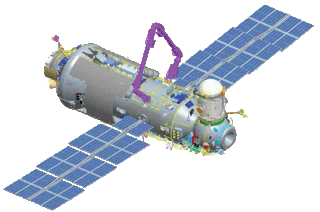
The European Robotic Arm (ERA) is a robotic arm that is attached to the Russian Orbital Segment (ROS) of the International Space Station. Launched to the ISS in July 2021; it is the first robotic arm that is able to work on the Russian Segment of the station. The arm supplements the two Russian Strela cargo cranes that were originally installed on the Pirs module, but were later moved to the docking compartment Poisk and Zarya module.

Oleg Valeriyevich Kotov was born on 27 October 1965 in Simferopol, Crimean oblast in the Ukrainian SSR. After a career as a physician assigned to the Soviet space program, he joined the Russian cosmonaut corps. He has flown three long duration spaceflights on the International Space Station logging over 526 days in space. Most recently, Kotov flew on the Soyuz TMA-10M/Expedition 37/Expedition 38 long duration spaceflight, from September 2013 until March 2014.

Space Center Houston is a science museum that serves as the official visitor center of NASA Johnson Space Center in Houston. It was designated a Smithsonian Affiliate museum in 2014. The organization is owned by NASA, and operated under a contract by the nonprofit Manned Spaceflight Education Foundation, a 501(c)(3) organization. The Johnson Space Center is the home of Mission Control and astronaut training.

Thomas Henry Marshburn is an American physician and a former NASA astronaut. He is a veteran of three spaceflights to the International Space Station and holds the record for the oldest person to perform a spacewalk at 61 years old.
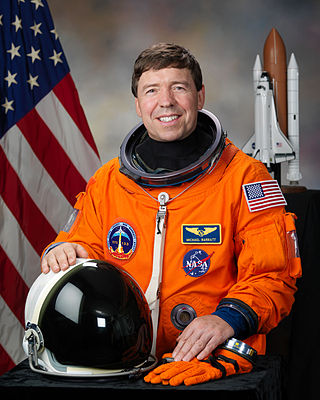
Michael Reed Barratt is an American physician and a NASA astronaut. Specializing in aerospace medicine, he served as a flight surgeon for NASA before his selection as an astronaut, and has played a role in developing NASA's space medicine programs for both the Shuttle-Mir Program and International Space Station. His first spaceflight was a long-duration mission to the International Space Station, as a flight engineer in the Expedition 19 and 20 crew. In March 2011, Barratt completed his second spaceflight as a crew member of STS-133. Barratt will pilot the SpaceX Crew-8 mission in Spring 2024.

Oleg Dmitriyevich Kononenko is a Russian cosmonaut. He has flown to the International Space Station four times, as a flight engineer for Expedition 17 aboard Soyuz TMA-12, as a flight engineer on Expedition 30 and commander of Expedition 31 aboard Soyuz TMA-03M, as a flight engineer on Expedition 44 and Expedition 45 aboard Soyuz TMA-17M, and as commander of Expedition 58 and Expedition 59 aboard Soyuz MS-11. Kononenko accumulated over 736 days in orbit during his four long duration flights to ISS, that is, the longest time in space of any currently active cosmonaut or astronaut.
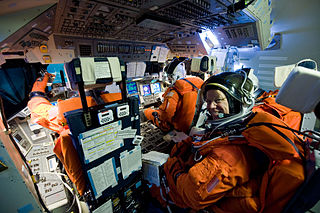
Shuttle Mission Simulator (SMS) was an umbrella term for three separate simulators for training Space Shuttle crews at the Johnson Space Center (JSC). The simulators were the MBS, the FBS, and the GNS.

The Space Station Processing Facility (SSPF) is a three-story industrial building at Kennedy Space Center for the manufacture and processing of flight hardware, modules, structural components and solar arrays of the International Space Station, and future space stations and commercial spacecraft. It was built in 1992 at the space complex's industrial area, just east of the Operations and Checkout Building.

NASA's Christopher C. Kraft Jr. Mission Control Center, also known by its radio callsign, Houston, is the facility at the Lyndon B. Johnson Space Center in Houston, Texas, that manages flight control for America's human space program, currently involving astronauts aboard the International Space Station (ISS). The center is in Building 30 at the Johnson Space Center and is named after Christopher C. Kraft Jr., a NASA engineer and manager who was instrumental in establishing the agency's Mission Control operation, and was the first Flight Director.

Soyuz TMA-02M was a space mission that transported three members of the Expedition 28 crew to the International Space Station. TMA-02M was the 110th flight of a Soyuz spacecraft and the second flight of the improved Soyuz-TMA-M series. The Soyuz remained docked to the space station for the Expedition 28 increment to serve as a potential emergency escape vehicle.
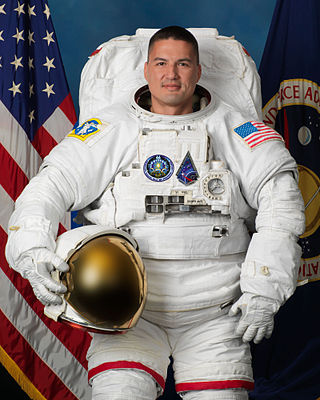
Kjell Norwood Lindgren is an American astronaut who was selected in June 2009 as a member of the NASA Astronaut Group 20. He launched to the International Space Station (ISS) as part of Expedition 44/45 on July 22, 2015.

The retirement of NASA's Space Shuttle fleet took place from March to July 2011. Discovery was the first of the three active Space Shuttles to be retired, completing its final mission on March 9, 2011; Endeavour did so on June 1. The final shuttle mission was completed with the landing of Atlantis on July 21, 2011, closing the 30-year Space Shuttle program.
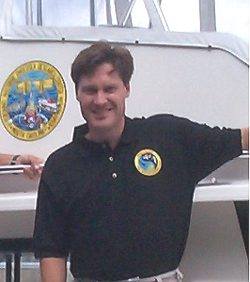
Marcum "Marc" Reagan is a Station Training Lead in Mission Operations at NASA's Johnson Space Center in Houston, Texas. He leads a team of instructors who together are responsible for developing and executing complex simulations for International Space Station (ISS) assembly and operations. Reagan also serves as an ISS "Capcom" from Mission Control, communicating with ISS astronauts in orbit. In May 2002, Reagan served as an aquanaut on the NASA Extreme Environment Mission Operations 2 crew. He subsequently served as Mission Director for multiple NEEMO missions.

Astronaut training describes the complex process of preparing astronauts in regions around the world for their space missions before, during and after the flight, which includes medical tests, physical training, extra-vehicular activity (EVA) training, procedure training, rehabilitation process, as well as training on experiments they will accomplish during their stay in space.
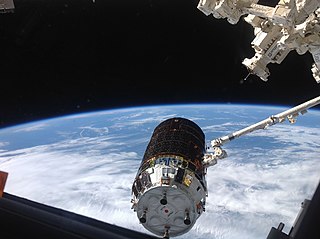
Kounotori 4, also known as HTV-4, was the fourth flight of the H-II Transfer Vehicle, an uncrewed cargo spacecraft launched in August 2013 to resupply the International Space Station. It launched from Tanegashima Space Center aboard H-IIB No. 4 rocket on 3 August 2013 and connected to ISS by 9 August 2013; it carried 5,400 kilograms (11,900 lb) of cargo. Kounotori 4 undocked on 4 September 2013 and was destroyed by reentry on 7 September 2013.























